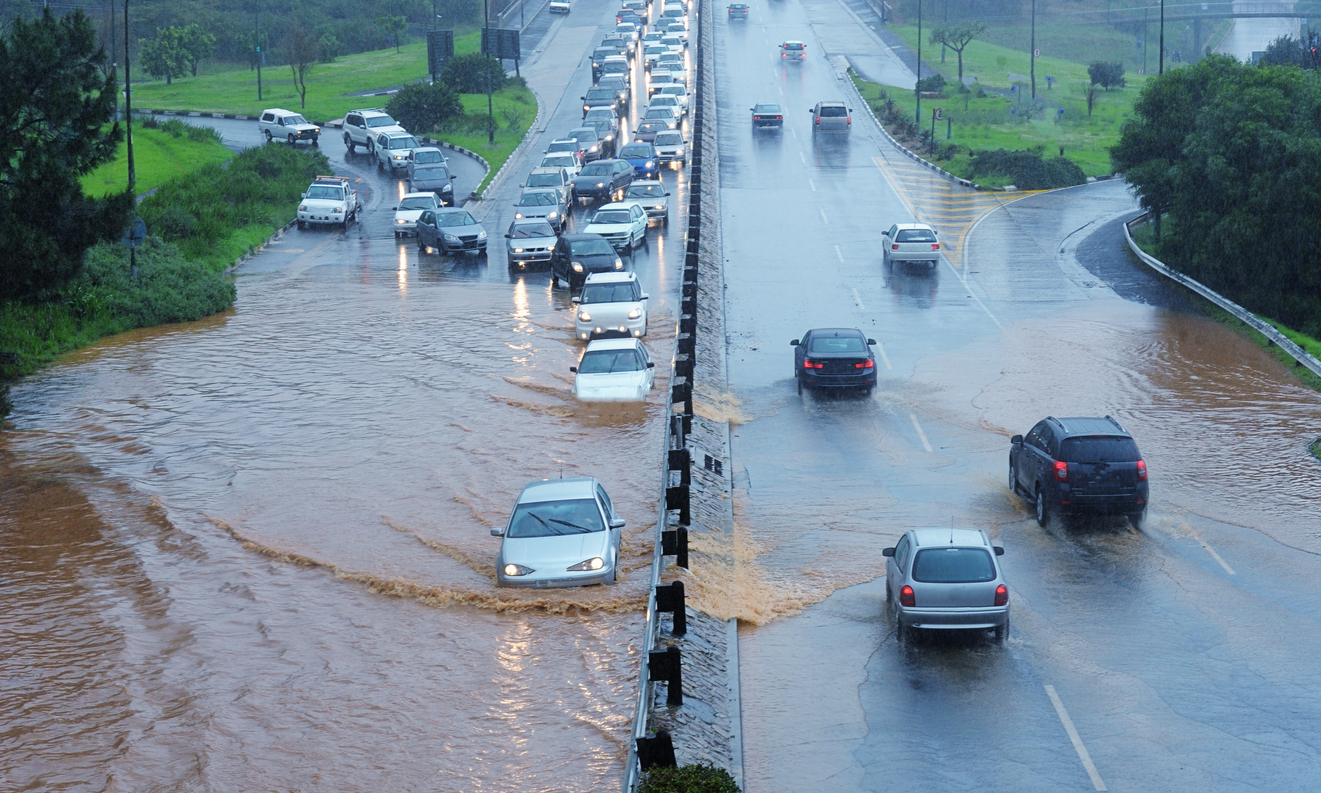The report examines risk over the next three decades, including every mile of road and major infrastructure in nearly all U.S. counties. It also examines risks for commercial and residential flooding as well as "social infrastructure" like government buildings, churches and schools.
After a summer of outsized floods across the nation — from Louisiana to Michigan to New York City — the report's researchers say one thing is clear: The U.S. isn't prepared.
"It's just bonkers to think about," said Matthew Eby, First Street Foundation's executive director.
"One-in-four pieces of critical infrastructure in the country have operational risks, meaning that they have the risk of becoming inoperable," Eby said.
Some 2 million miles of roads could become impassable, with risk rising over the next three decades. Roughly 17% of social infrastructure facilities like schools and 14% of all residential properties are also vulnerable, according to the research.
The report comes as Congress ponders investing trillions, including a bipartisan infrastructure bill, to address the outdated systems that help the nation run on a daily basis. The U.N. last week warned the world is woefully unprepared for climate-induced disasters including flooding.
Issues inland
Most at risk, according to First Street, are areas along the Atlantic and Gulf coasts as well as the Northwestern U.S.
Coastal areas in the southeastern part of the country as well as areas in the Appalachian Mountains, like West Virginia, also top of the list of places most at risk from climate-driven disasters.
These inland areas could be particularly vulnerable because historically — prior to the advent of widespread climate change — they haven't experienced this degree of flooding. Not only is their infrastructure not prepared to handle this heavier level of flooding, but local officials and residents may not even know to expect it, said Jeremy Porter, First Street's director of research and development.
"A much more prevalent issue than you would think ... [is] the inability or the lack of knowledge of what's at risk for the majority of counties and cities across the country," Porter said, adding that smaller communities are most at risk.
Extreme weather events this year underscored the vulnerability of many smaller communities further from the coasts against surprise floods. This spring, heavy rains led to mudslides and nearly 100 road closures in West Virginia. In July, historical rainfall closed several major highways in Detroit.
When Hurricane Ida struck the Gulf Coast in August, New Orleans was spared from extreme flooding because its levee system had been rebuilt and reinforced in the wake of 2005's Hurricane Katrina disaster. Much of the destruction from the 2021 storm landed instead in other parts of Louisiana and throughout Appalachia, reaching as far as New York's Long Island.
Flooding in eastern Tennessee killed at least 22 people, took out roads and cell phone towers and wiped houses off their foundations. Philadelphia saw record flooding on the Schuylkill River; New Jersey saw one of its deadliest storms on record and New York City's subway shut down overnight from flash floods.
Four states hold biggest risk
Areas in North Carolina face the most increasing risk from flooding overall, according to the report. In Washington County, more than 100 miles east of Raleigh, 100% of the infrastructure is at risk of becoming inoperable from floods. Four states — Louisiana, Florida, Kentucky and West Virginia — are home to 17 of the report's top 20 counties with the highest concentration of flood risk to community structures.
New Orleans and three cities in Florida — Miami, St. Petersburg and Tampa — top the list of urban centers in danger of massive flooding. On the West Coast, Sacramento and Fresno, California, as well as Eugene, Oregon, are among the most at risk, the report notes.
Too few resources
First Street makes its data publicly available, including data for homeowners that the nonprofit has released over the past two years.
Yet information is only the beginning of any mitigation process. Many small and mid-sized cities and counties don't have the capacity to translate the raw data into a risk assessment of the community's particular risks.













